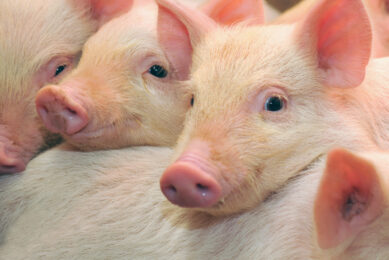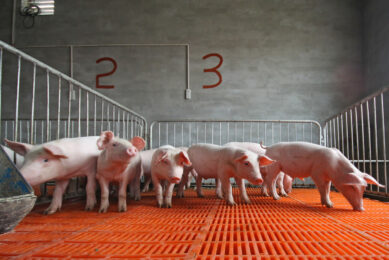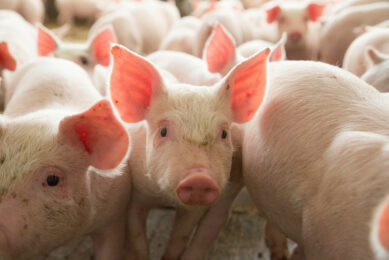Lactating sows and heat stress
I believe it is now the right time to discuss ways to increase nutrient intake in lactating sows under heat stress. With summer approaching quickly, and a hot summer is predicted to be, changes and adjustments should start now to at least alleviate the negative effects of heat stress on feed intake.
I believe it is now the right time to discuss ways to increase nutrient intake in lactating sows under heat stress. With summer approaching quickly, and a hot summer is predicted to be, changes and adjustments should start now to at least alleviate the negative effects of heat stress on feed intake.
It should be reminded that animals reduce feed intake under heat stress because digestion and metabolism of feed increases the internally produced heat (heat increment in energy metabolism terminology) making thus animals even more uncomfortable. It is also important to realise that heat stress combined with high humidity increases dramatically the level of discomfort compared with hot but dry environments. Below are a number of nutritional interventions to help lactating sows during the summer months.
Increase nutrient density
It is generally assumed that daily nutrient uptake can be maintained during the summer months if nutrient density increases proportionally to the expected reduction in feed intake. For example, if feed intake is expected to drop by 10%, then all nutrients (including vitamins, minerals, and trace minerals) should be increased by 10% to compensate for the reduction in feed intake.
For several nutrients, however, there are manufacturing limits that may restrict the application of this strategy. For example, it is not always practical to add more than 6-8% fat in commercial diets.
Also, the concentration of certain additives cannot be altered due to country-specific regulations. In many cases, the drop of feed intake is so severe that feed density cannot be increased enough to compensate for the loss.
Reduce excess protein
Excess protein is deaminated and excreted in the form of urea. This process generates substantial metabolic heat, and to this end, it is highly recommended to reduce dietary protein concentration by about 2% with the aid of crystalline amino acids. Further reductions in dietary protein are either economically unfeasible or result in diets limiting in valine and isoleucine.
Reduce fiber concentration
Fiber digestion and metabolism generates considerably more heat compared to carbohydrates, with fat and lipids generating the least amount of internal heat. Thus, one of the more common measures to combat heat stress is to reduce dietary fiber by 1-3% (depending on initial concentration). Care should be taken for sows to be supplemented with a strong laxative (usually in the form of a salt) to compensate for the reduction in dietary fibre.
Increase use of fat calories
Following from the above, it appears that fats and oils not only increase dietary density, but they also generate less heat during digestion and metabolism. Therefore, diets high(er) in lipids are almost invariably recommended for combating stress heat. However, it is always imperative to also increase (proportionally) the levels of all amino acids and other nutrients, to avoid unbalancing diets.
Add sodium bicarbonate
Research and practical experience has clearly demonstrated that adding 5-10 kg of sodium bicarbonate per metric tonne of complete feed, improves feed intake in lactating sows.
Pelleted diets
Pelleting diets increases physical density resulting in higher uptake of nutrients at a given volume of feed. Combined with increased nutrient density, these two strategies help markedly in sustaining daily nutrient intake during heat stress.
Extra vitamins
In other monogastric species, additional vitamins, and especially vitamin C have been shown to help animals under heat stress. Such effects are not so well documented with pigs, but they definitely merit further investigation.
Cool water
It has been shown that pigs provided with cool(er) water during periods of heat stress are able to sustain better performance. In addition, pigs offered cool(er) water consumed less water per day compared to control pigs, indicating that cool(er) water enabled pigs to quickly adjust their body temperature in response to heat stress.











